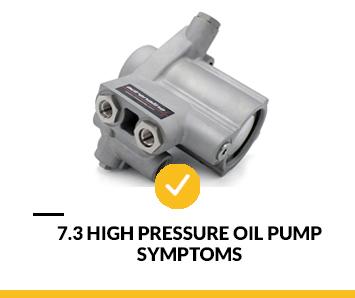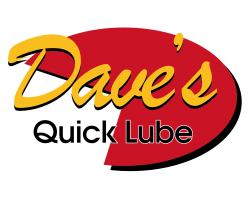High pressure oil pump issues are difficult to detect in a timely manner since they are typically intermittent and may not manifest until the condition has advanced. It’s critical that you visit an automobile repair shop as soon as possible if any of these high-pressure oil pump symptoms appear!
The high pressure oil pump, often known as the HPOP, is an important component of your car’s engine. It distributes oil to all components of your engine in order to keep them lubricated and operating effectively. If you have a problem with this element, it can lead to a slew of other issues, such as poor performance, excessive smoke from the tailpipe, and sluggish starting speed or stalling off on acceleration.

What Are The Warning Indicators Of A 7.3 Powerstroke High Pressure Oil Pump?
One of the first indications of a High-pressure oil pump failure is an engine that refuses to start or no start difficulty.
In addition, another early indication is when your engine’s power and performance significantly drop.
Keep these indications in mind if you’re looking for signs of a 7.3 HPOP failure.
Inspecting Your 7.3 High-Pressure Oil Pump
The initial step in dealing with a malfunctioning high-pressure oil pump is to conduct a complete diagnostic inspection.
The HPOP can be investigated using the diagnostic scan tool.
Connect the scan tool to your car’s OBD connector.
Start with the ICP mark on the data stream line. Then, move to the data stream and look for a datastream line with an ICP symbol on it. Once you’ve verified that you have PSI and someone else is monitoring the ICP data stream reading, take a look at your readings to confirm accuracy.
Then, switch on the highway and accelerate your car at full throttle 50 to 70 (if your speed limit permits it) in a split second.
At full throttle, the ICP data stream reading will continually jump from 2800 to 3000 PSI as you accelerate, and it will gradually decline and stabilize in one particular PSI.
After your ICP reading value has stabilized, check it. If the reading is close to or equal to 2800 PSI, you’re in good shape.
However, some vintage high-pressure oil pumps can stabilize at 2200 to 2600 PSI while retaining old HPOP functionality.
Remember that 2800 PSI is the norm, and 2200 PSI means you’re getting close to the barrier. If you see below that PSI, it implies an immediate HPOP upgrade, rebuild, or replacement is necessary.
Top 7.3 High-Pressure Oil Pump Symptoms
We’ve compiled a list of problems connected with the high-pressure oil pump for you below. You’ll learn how to find and repair any issue related to the high-pressure oil pump, as well as how to increase engine/air/fuel pressure by controlling.
1. Vehicle Will Not Start
You’re on your way to work, and you can’t start the car even though you’ve been in there for 30 minutes? Don’t worry. This issue is very typical, and you might be able to solve it on your own. Perhaps there’s a problem with the oil. Look at all of the levels and conditions to ensure they are correct before assuming it’s because of the oil.
Also, be sure you’re using the correct type of oil. Oil is an essential component in every car. The 7.3 Powerstroke engine, for example, uses it as a hydraulic fluid for all of the injectors in the automobile. When the vehicle’s guaranteed operating range isn’t satisfied, it will have problems functioning correctly. It won’t start up in some situations.
2. Poor Fuel Economy
There are a few reasons why your car’s fuel efficiency may be declining. Faulty spark plugs, faulty fuel injectors, and other things like that are just a few examples. It’s possible that the high-pressure oil pump is leaking if you’ve looked at all of the preceding problems and yet see a drop in fuel mileage. To function properly, your injectors require optimal oil pressure. You will experience all of the aforementioned issues if there is an leak.
That said, here’s how you can find a leak:
- Look in the valley first and foremost. When trying to discover a leak, it’s usually in the valley.
- Look for oil on the high-pressure hoses. If you spot any, the chances are that your car’s high-pressure lines are clogged. Replace the damaged lines to cure this problem.
Before heading to a dealer, double-check those items.
It’s possible that some drivers will undertake a complete evaluation of their vehicle to discover the source of the leak.
If you want to know more about high-pressure lines and how to replace them, here’s a video that will walk you through the process:
3. Damaged Injector
If you’ve ruled out the valley or high-pressure lines as the source of your leaking faucet. Perhaps it’s the oil pressure sensor that’s to blame.
This little sensor’s purpose is to keep track of the pressure going into the injectors.
If something is wrong with it, you’ll have a hard time starting your car.
However, if the sensor breaks, you may have the following issues:
- Have you ever gotten into your car only to waste time attempting to start it up? Perhaps the injection control pressure sensor has been damaged. Diesels are particularly prone to this defect.
- If the check engine light comes on, it’s likely that there is a problem with the sensor. It will notify the driver as soon as it detects an issue.
- Another indication of a faulty sensor is the loss of power. If you experience a substantial drop in power while on the road, consider checking the sensor.
Those indications might be useful in determining the sensor’s condition. However, there is still something you can do.
To be sure it’s the sensor, follow these instructions:
- Remove the sensor and inspect it for signs of oil. If there is any oil inside, you must replace it as soon as possible.
- Take a good look at your gauge readings. If the ICP is lower than 600, it may be an indication that it’s broken. Also, look for any issues with the ICP sensor connection. It might be a bad connection causing the problem. So keep an eye out for it.
Some of these concerns are unique to each car. But it should be more than enough for you to get started.
Furthermore, you could have all of these problems at the same time.
Unfortunately, replacing this sensor is a simple and inexpensive task. The component itself costs approximately $30. You don’t need any special tools or skills to complete this project.
However, no matter how inexpensive it is, you should pay attention to this before it gets worse.
If the high-pressure oil pump were to fail later, it would be more expensive to replace.
4. Vehicle Loses Power And Shutters
A clogged filter is another common symptom of a 7.3 high-pressure oil pump failure, which might cause the car to behave erratically.
There is a filter in front of the high-pressure oil pump, which collects all of the oil before it goes into the high-pressure oil pump.
When the filter gets blocked, your car will have a hard time producing enough pressure. As a consequence, your engine could fail and be damaged.
Unfortunately, this is a straightforward and cheap repair. A new display will set you back between $20 and $50.
You could clean it a little bit and see if it makes a difference, though you’re better off getting a new one.
It’s usually the little things that cause the most grief. So, see if the filter is clean and clear.
5. Truck is Chugging and Losing Power
The high-pressure oil pump is very reliable, as previously stated. As a result, the problem is most likely not with the HPOP. It’s quite probable that the problem lies in the under valve cover harness. If the UVCH comes free, it may cause damage to the automobile. It’s not uncommon to encounter this difficulty; therefore there’s nothing unusual about it.
Tiedowns are the answer to this problem. They may be used to connect everything together and solve the problem. However, keep in mind that this is only a brief-term fix until you can replace the valve cover harness.
The newer UVCHs have stronger clips to keep the device more securely in place. However, using zip ties to repair your car is simple:
- Remove the intercooler and intake. A bracket will be visible below, as well as a connector that must be disconnected after that.
- You should be able to access the valve now. What you’re searching for is the little plug that goes into the valve. So, use a zip tie to secure it. It’ll be safer this way. After that, simply combine everything together.
That’s all there is to it. You should have no trouble starting your car or driving it smoothly once again.
Again, as soon as possible, replace the valve cover. This should only be done to get you back on the road for a while.
6. Rough Idle
- When you come to a stop sign, does your automobile make unusual noises? The odds are that the injectors are clogged. Here’s how to check the high-pressure oil pump in a 7.3. Examine the gauge control panel for any anomalies and check the fuel pressure at idle.
If your fuel pressure is too low, it’s likely that the injectors have malfunctioned. Replacing them isn’t particularly costly. However, now is the time to replace them. Take measures now to avoid any further damage. Things may get a lot worse before they improve for your car, and you’ll end up spending more money in the long run.
7. Long Crank
If your car cranks roughly twice as long as usual and feels like it’s jerking, you may have a faulty fuel injection control module. When this component fails, the vehicle will appear normal for 2-3 seconds to hear a horrible hunger sound before exploding.
Fortunately, it’s not the battery. When the battery dies, you generally only get a sluggish crank instead of a lengthy one. So let’s eliminate that possibility first. That said, check the fuel injection control module voltage if you’re getting less than 47.5 volts.
If the FICM is damaged, it should either be repaired or replaced with a new power supply. The cranking should now be gone once you’ve changed those two components. You should also look into purchasing a gauge control panel. This is an easy method to check your automobile and figure out what’s wrong with it.
7.3 High-Pressure Oil Pump Replacement Cost
We cannot extend this any further, but 7.3 high-pressure oil pump symptoms might be caused by something else. The high-pressure oil pump is not easily damaged. As a result, we recommend that you check other components to ensure that the problem isn’t with the high-pressure oil pump.
If you’ve completed all of the steps above and discovered that the high-pressure oil pump is faulty, it’s reasonable to assume it was damaged and must be replaced. That said, a brand-new high-pressure oil pump might cost anywhere from $1,400 to $2,000 depending on your car and location. Of course, any price is subject to variation based on your vehicle and location.
Rebuilding Your 7.3 High-Pressure Oil Pump:
If your diagnosis indicates that the HPOP you currently have is the source of your problems, you’ll need to replace it with a 7.3 high-pressure oil pump rebuild kit. There are several HPOP rebuild kits on the market.
These rebuild kits are like an entire package and contain from the HPOP fittings, drain plug O-rings, the IPR to the new set of serviceable plugs and check balls, everything that you need.
So, all you need to do is purchase the recommended kit and upgrade your HPOP into a new version.
Remember to apply Loctite 680 to the new connections.
Removing and Replacing a 7.3 High-Pressure Oil Pump:
To install a new HPOP, first remove the old one.
Remove the black plastic engine cover and both battery ground cables first. To empty the fuel bowl, use the fuel bowl drain lever to push in it. A 3/16 inch Allen plug on top of the reservoir must be removed and disconnected.
Remove the drain valve sleeve after that, using a manual hand pump, remove the EBP sensor and tube from your HPOP reservoir compartment. Remove all four fuel lines from the fuel bowl and the fuel bowl heater connection next. Then wrench off the fuel drain valve sleeve and detach the EBP sensor along with its tube. Remove the gasoline bowl and hoses lastly. To remove IPR, disconnect its electrical connector
Remove your HPOP’s front cover access plate, drive gear bolt, and the other two connecting bolts that connect the HPOP to its front cover in order to have open and clear access to it. Remove the old HPOP and replace it with the new one last.
Now, one by one, go through all of the preceding stages in reverse to complete the reinstallation operation.
Here are a few additional hints to keep your HPOP in good operating condition:
- Replace any leaks or hoses that may be causing oil loss. This includes the radiator, heater core, thermostat housing, water pump, and all gaskets and seals in between.
- Check for any trapped air bubbles inside your cooling system and add more coolant as needed (an engine flush is recommended). Maintain the correct amounts of oil in your engine to ensure that it can keep up with high demands over time. Make sure you change your fluids on a regular basis, too!
- Replace your vehicle’s spark plugs at least once every 18 months, or when they begin to misfire. Check for leaking fuel injectors and repair them as soon as possible.
- Regardless of how far you go, keep an eye on your oil changes.
Conclusion
It is critical to replace a failing high-pressure oil pump if it fails, since it will not be able to generate enough pressure to drive the camshaft. If not repaired, this would result in significant engine damage over time. A poor HOPP can also cause issues with fuel injectors, ignition systems, wastegate control solenoids, and other components that require pressurized lubrication for proper function. In some situations, a lack of lube might result in engine component failure due to total failure of the HPOP; this would necessitate a complete engine replacement at considerable expense as opposed to a HOPP repair. So, think about your car ahead of time and avoid HPOP concerns.
Any 7.3 high-pressure oil pump symptoms that you encounter should be dealt with expeditiously. These issues can get more severe over time. Finally, all of these repairs will cost you a significant amount of money. That being said, we hope you were able to identify the problem source. It’s uncommon for an HPOP to go bad. Those things are incredibly robust. The majority of the time, it’s a cheap and simple repair that anybody can do on their own at home.



